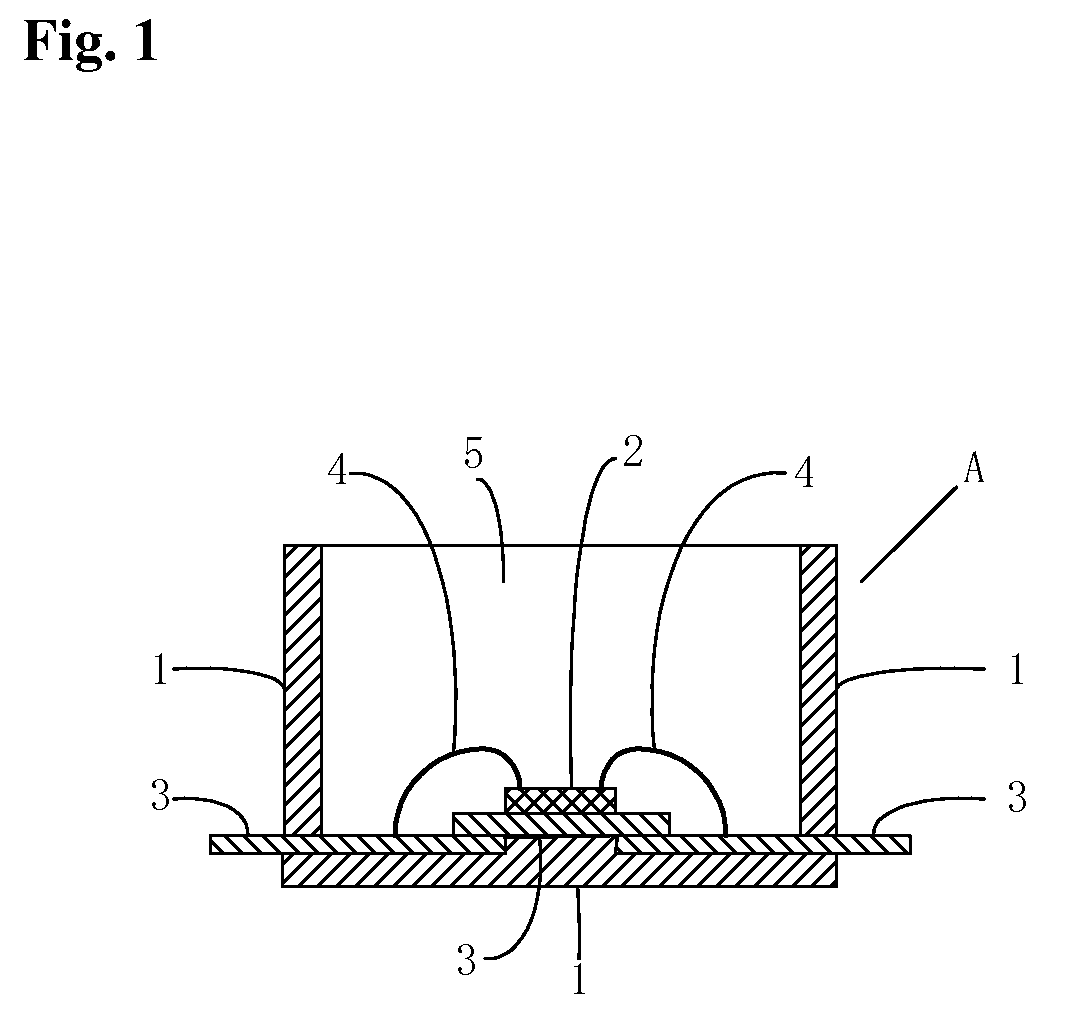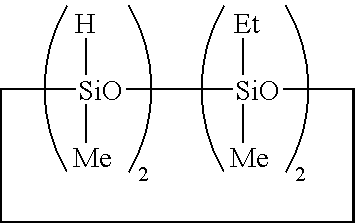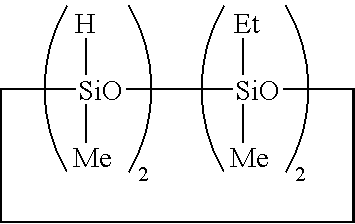Curable organopolysiloxane resin composition and optical part molded therefrom
a technology of organopolysiloxane and resin composition, which is applied in the direction of optics, optical elements, instruments, etc., can solve the problems of reducing the reliability of optical parts made from organopolysiloxane resin compositions, and reducing light transmittance, so as to achieve easy preparation, prolong the life of pots, and accelerate curing
- Summary
- Abstract
- Description
- Claims
- Application Information
AI Technical Summary
Benefits of technology
Problems solved by technology
Method used
Image
Examples
application examples
[0068]The present invention will be further described in more detail with reference to application examples of the curable organopolysiloxane resin composition and of the semiconductor device of the invention. In the examples given below, the values of viscosity were obtained at 25° C. The following characteristics of the curable organopolysiloxane resin composition and cured bodies thereof were measured.
[0069][Total Acid Number]
[0070]The total acid number was measured by the indicator titration method according to JIS K2501 (1992).
[0071][Hardness of Cured Body]
[0072]A cured body was produced by curing the curable organopolysiloxane resin composition for 1 hour at 150° C. in a hot-air-circulation-type oven. Hardness of the obtained cured body was measured by the Type-D Durometer according to JIS K6253.
[0073][Refractive Index of the Cured Organopolysiloxane Composition and Cured Body]
[0074]The 25° C. refractive index of the curable organopolysiloxane resin composition was measured by...
synthesis example 1
[0081]A four-neck flask equipped with a stirrer, reflux cooler, inlet port, and a thermometer was filled with 82.2 g of 1,3-divinyl-1,1,3,3-tetramethyldisiloxane, 143 g of water, 0.38 g of trifluoromethanesulfonic acid, and 500 g of toluene. The components were mixed, and while the components were stirred, 524.7 g of phenyltrimethoxysilane were added drop-wise during 1 hour. After adding phenyltrimethoxysilane, the product was subjected to 1 hour of reflux with heating. After cooling, the lower layer was separated, and the toluene solution layer was washed three times with water. Following this, 0.40 g of potassium hydroxide was added to the washed toluene solution layer, and the solution was subjected to reflux while water was removed through a water separation tube. After the separation of water was completed, the product was concentrated until the concentration of solids reached 75 wt. %, and reflux was carried out for 5 hours. After cooling, the product was neutralized by adding...
synthesis example 2
[0082]A four-neck flask equipped with a stirrer, reflux cooler, inlet port, and a thermometer was filled with 100 g of toluene, 50 g of water, and 50 g of isopropyl alcohol. The components were mixed and, while the components were stirred, a liquid mixture of 14.11 g of methylvinyldichlorosilane, 19.37 g of dimethyldichlorosilane, and 158 g of phenyltrichlorosilane were added drop-wise during 1 hour. After adding was completed, the product was stirred for 1 hour at room temperature. The lower layer was separated, and the toluene solution layer was washed three times with water. Following this, 0.12 g of potassium hydroxide was added to the washed toluene solution layer, and the solution was subjected to reflux while water was removed through the water separation tube. After the separation of water was completed, the product was concentrated until the concentration of solids reached 70 wt. %, and reflux was carried out for 5 hours. After cooling, the product was neutralized by adding...
PUM
| Property | Measurement | Unit |
|---|---|---|
| light transmittance | aaaaa | aaaaa |
| light transmittance | aaaaa | aaaaa |
| viscosity | aaaaa | aaaaa |
Abstract
Description
Claims
Application Information
 Login to View More
Login to View More - R&D
- Intellectual Property
- Life Sciences
- Materials
- Tech Scout
- Unparalleled Data Quality
- Higher Quality Content
- 60% Fewer Hallucinations
Browse by: Latest US Patents, China's latest patents, Technical Efficacy Thesaurus, Application Domain, Technology Topic, Popular Technical Reports.
© 2025 PatSnap. All rights reserved.Legal|Privacy policy|Modern Slavery Act Transparency Statement|Sitemap|About US| Contact US: help@patsnap.com



